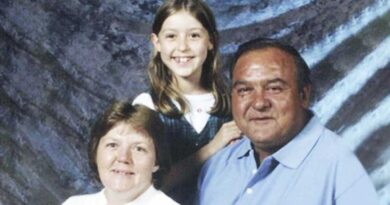Relisha Rudd Disappeared in Washington DC
On the morning of March 1, 2014, eight-year-old Relisha Tenau Rudd vanished from the sprawling D.C. General Family Shelter in Southeast Washington, D.C., setting off one of the most wrenching missing-child cases in the nation’s capital. Over the next days and weeks, her disappearance exposed systemic failures in the city’s homeless services, child-welfare reporting, and school attendance oversight. Despite widespread media attention, community vigils, and an active FBI investigation, Relisha’s fate remains unknown more than a decade later. This article examines her life, the circumstances of her disappearance, the subsequent investigation, and the lasting changes her case prompted.
Early Life and Family Circumstances
Born October 29, 2005, Relisha Rudd was one of four children in a family struggling to overcome poverty and instability. Her mother, Shamika Young, moved into the D.C. General Family Shelter with Relisha and her three younger brothers in late 2013 when their rental housing situation fell through. Young juggled multiple service-industry jobs as she tried to maintain a sense of normalcy for her children, relying on the shelter’s limited childcare, tutoring, and basic support programs. Relisha adored school and was known for her bright smile and inquisitive nature. Neighbors recalled seeing her helping her brothers with homework and chatting playfully with other children in the shelter’s common areas.
D.C. General Family Shelter Environment
At the time, the D.C. General Family Shelter was the largest family-only emergency shelter in the country, housed in a repurposed hospital complex. Though designed to provide a temporary haven, the facility had become de facto long-term housing for hundreds of families. Rows of cots filled former patient wards, and makeshift cubicles carved from curtains provided scant privacy. The shelter struggled with understaffing, overcrowding, and limited on-site security. Parents often felt they had little choice but to leave children in the care of rotating volunteers so they could work odd hours. Observers later criticized the shelter’s layout and policies, noting that the institutional environment made individualized oversight of children difficult.
Encounter with Kahlil Tatum
One of the shelter’s contracted janitors was fifty-one-year-old Kahlil Malik Tatum, a convicted felon whose past included a drug-related conviction. Despite his criminal history, Tatum passed a basic background check to work in the facility. He quickly befriended several families, offering rides or small repairs to their apartments. Relisha’s mother, like many others, saw him as a friendly neighbor and allowed Relisha to play near his work area. Over time, Tatum positioned himself as a mentor figure to Relisha, even referring to himself as “Dr. Tatum” though he had no medical credentials. His attentiveness—bringing cookies or toys—endeared him to some parents, while others found his informal outreach unusual but harmless in the understaffed shelter environment.
Weeks Leading Up: Unreported Absences
In February 2014, Relisha began missing days of school at Payne Elementary. Social workers later described her as an “at-risk” student; under shelter rules, any absence of more than a day should have triggered follow-up. Yet her attendance issues went unchecked. On February 26, security footage captured her walking alongside Tatum in a Holiday Inn Express hallway adjacent to the shelter’s block. No shelter staff or teachers alerted authorities. Days passed without Relisha in her classroom, and no missing-person report was filed. The combination of bureaucratic inertia and overburdened caseworkers allowed the pattern to continue until early March.
The Day of Disappearance
On March 1, 2014, Relisha left her family’s shelter room mid-morning, telling her mother she was going to the recreation area. Instead, she walked to a nearby Days Inn and entered a second-floor room with Tatum. Hours later, when he returned alone to the shelter, he claimed she had gone to visit a relative. Alarmed that she had not arrived at school and was absent for a fourth consecutive day, shelter staff finally contacted the Metropolitan Police Department. By that time—nearly three weeks after she was last seen—Relisha’s trail had gone cold.
Initial Response and Delays
The delay in reporting Relisha missing was staggering. Under city policy, any child absent from school more than three days should immediately trigger a “child in need of services” referral, but coordination between the shelter, school system, and child-welfare agencies was almost nonexistent. When the shelter finally alerted police, the department classified her as a “runaway” initially, under protocols that treated children in unstable housing differently than those in private residences. It took until March 19 for an Amber Alert to be issued—eighteen days after her last confirmed sighting. By then, critical early investigative steps had been missed.
Law Enforcement Investigation
Once the case attained national attention, the FBI joined the Metropolitan Police in treating Relisha’s disappearance as a possible abduction. Investigators canvassed hotels, motels, shelters, and playgrounds across Northeast D.C. They interviewed hundreds of witnesses and sifted through hours of surveillance footage. Attention quickly turned to Kahlil Tatum, the last adult seen with Relisha. Detectives obtained phone records showing his frequent calls to and from the shelter, and they traced his whereabouts to multiple motels. Yet when they finally located Tatum’s wife dead of a gunshot wound in a Maryland motel room on March 20, they realized they were contending with an escalating tragedy.
Suspect’s Demise
Investigators found Tatum’s wife, Andrea, shot twice in the chest with a small-caliber handgun. Her death, ruled a homicide, shook the community and raised fears for Relisha’s safety. Eleven days later, on March 31, Tatum’s own body was discovered in a locked storage shed in Kenilworth Park & Aquatic Gardens, an apparent suicide by the same weapon. A farewell note indicated remorse for his wife and included cryptic references to “taking care of business,” fueling the grim suspicion that he had harmed Relisha before ending his own life. Despite exhaustive searches of his residence, vehicles, and known hangouts, no trace of Relisha’s remains was ever found.
Theories and Speculation
From the outset, theories abounded. Some held that Tatum, convinced Relisha was his surrogate daughter, first killed his wife to shield his secret and then abducted Relisha for unknown motives. Others speculated he might have trafficked her to a third party, given his prior drug-network associations. A more hopeful line of inquiry considered that she might have escaped to a friend’s home or taken up with another adult who believed they were rescuing her. Yet no credible sightings emerged beyond the Days Inn video, leaving the case shrouded in mystery.
Systemic Failures Exposed
Relisha’s disappearance laid bare critical flaws in the District’s social-services infrastructure. An after-action review by the city council pointed to:
- Shelter Oversight Gaps: Shelter rules treated children’s absences as low priority compared to adult crises, allowing unaccompanied minors to slip away unnoticed.
- School-Shelter Communication Breakdowns: Payne Elementary’s attendance office did not flag prolonged absences tied to household displacement, despite federal requirements under McKinney-Vento.
- Fragmented Child-Welfare Protocols: Child and Family Services Agency (CFSA) lacked real-time access to shelter rosters, delaying mandatory welfare checks.
- Amber Alert Constraints: Legal definitions initially prevented immediate issuance for missing children in government facilities, costing invaluable hours during the critical first days.
These revelations prompted sweeping reforms in the following months.
Community Response and Advocacy
The void left by official inertia was filled by grassroots advocates. Henderson Long, founder of the nonprofit D.C.’s Missing Voice, organized volunteer brigades to plaster streets and highway overpasses with Relisha’s posters. Annual vigils took root on March 1 in neighborhoods near the old shelter and outside Municipal Center. Local churches hosted prayer breakfasts; teen activists curated social-media campaigns under the hashtag #FindRelisha. Families of other missing children rallied in solidarity, forging networks that exchanged best practices on searches, media outreach, and legal advocacy.
Policy Changes and Legacy
By mid-2015, the District had demolished the old D.C. General complex and replaced it with smaller, community-based family shelters featuring improved security, on-site childcare, and integrated case management. The school system adopted a real-time attendance-alert platform tied to shelter and housing-agency databases, ensuring that any child’s unexcused absence for more than one day triggers immediate follow-up. CFSA restructured its intake procedures to flag at-risk children in congregate care settings. While no single reform can undo the anguish of Relisha’s disappearance, these structural shifts have been credited with preventing similar tragedies in the years since.
Ongoing Investigation and Hope
Despite the suspect’s death, the FBI maintains an open investigation. A reward of $25,000 remains posted for information leading to Relisha’s location or proof of her well-being. Investigators periodically revisit cold leads, review tips from the public, and collaborate with neighboring jurisdictions in case she was transported across state lines. Relisha’s case file occupies a permanent slot in MPD’s cold-case bureau, symbolizing both a painful loss and an enduring commitment to resolve one of D.C.’s most haunting mysteries.
Cultural Impact and Remembrance
Relisha’s story reverberates beyond policy and headlines. Artists have created murals across the city bearing her likeness and the words “Never Forget.” Theater troupes have staged benefit performances, weaving her narrative into plays about homelessness, child welfare, and community resilience. Local schools incorporate her case into civics curricula, engaging students in exercises on social responsibility and the rights of unhoused populations. Each July 11th, “Relisha Rudd Remembrance Day” picks up the torch of awareness, transforming loss into a catalyst for vigilance and compassion.
Conclusion
More than ten years after the shadows closed in on that Days Inn hallway, the world still searches for definitive answers about what happened to Relisha Rudd. Her disappearance remains both a cautionary tale and a beacon—reminding us how vital it is to protect society’s most vulnerable, to bridge gaps between systems meant to safeguard children, and to hold onto hope even when the trail has grown cold. In the memory of Relisha, communities continue to stand guard, to demand accountability, and to believe that one day her name will lead us home.
Discover more from City Towner
Subscribe to get the latest posts sent to your email.




